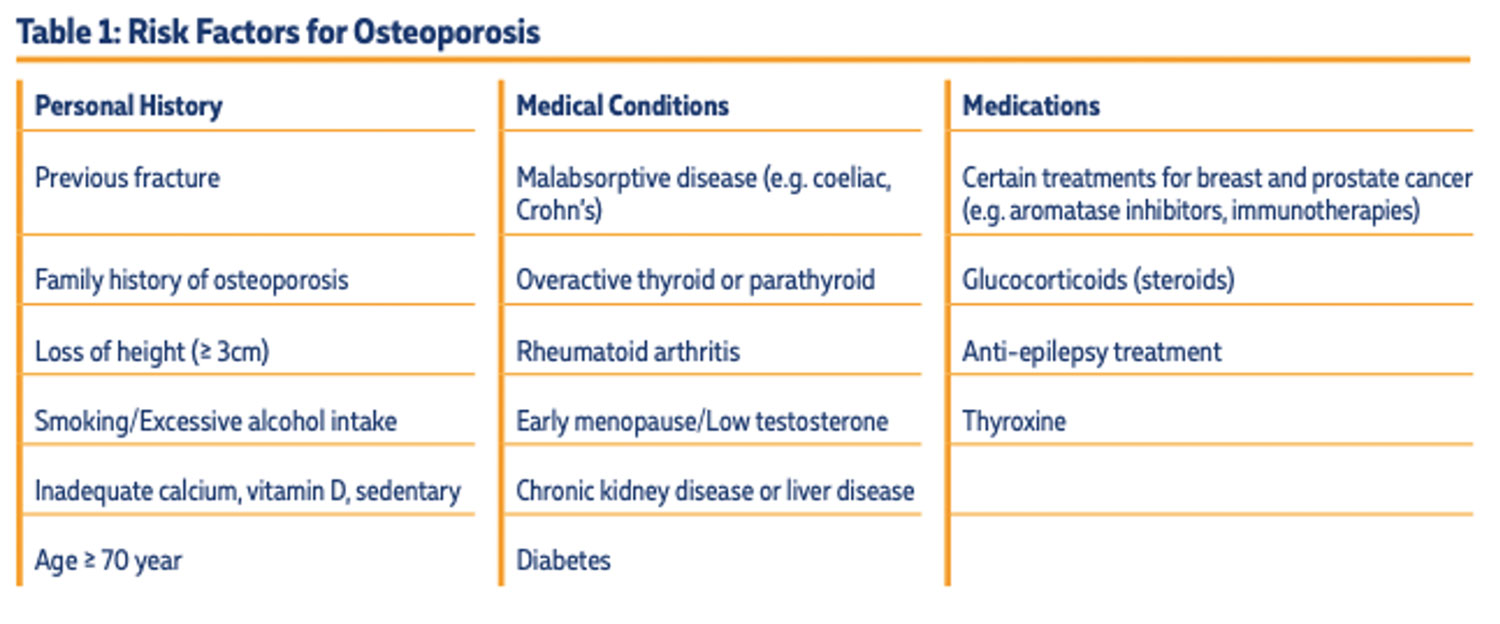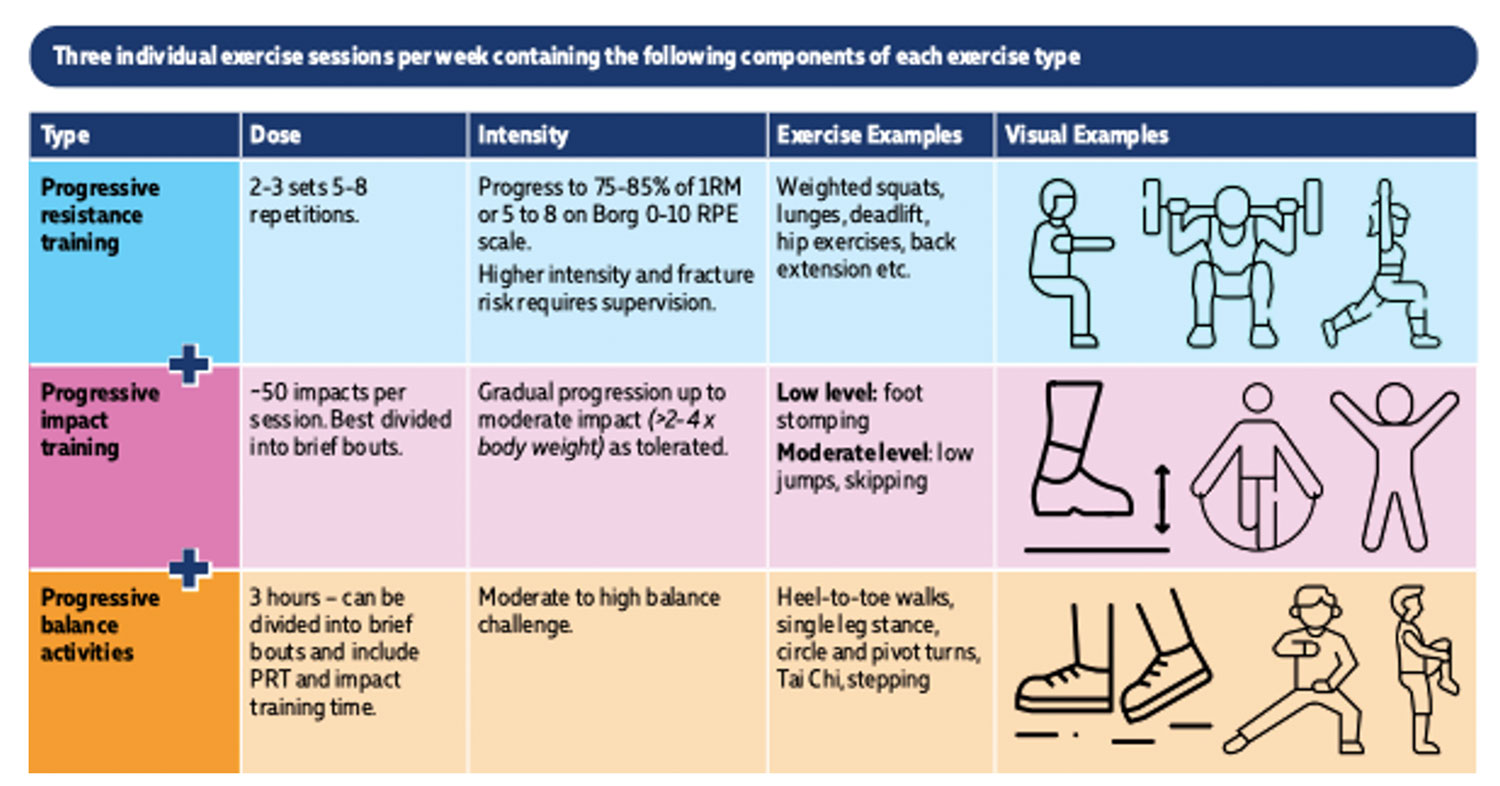Written by: Nathaniel Briscomb (Accredited Exercise Physiologist)
Osteoporosis is a condition where bones become weak and brittle, leading to an increased risk of fractures. While it is most common in postmenopausal women due to reduced oestrogen levels, it can also affect older adults of both genders and individuals with certain medical conditions or lifestyle factors.
 In Australia, over two-thirds of people aged 60 and older are living with osteoporosis or osteopenia. The risk of death within five years after a fracture rises to 26% in women and 37% in men. In 2022 alone, it is estimated that there were around 183,000 fractures linked to poor bone health. These fractures not only affect the individuals and their caregivers but also place a significant strain on the healthcare system, with fracture-related costs amounting to $2.59 billion annually.
In Australia, over two-thirds of people aged 60 and older are living with osteoporosis or osteopenia. The risk of death within five years after a fracture rises to 26% in women and 37% in men. In 2022 alone, it is estimated that there were around 183,000 fractures linked to poor bone health. These fractures not only affect the individuals and their caregivers but also place a significant strain on the healthcare system, with fracture-related costs amounting to $2.59 billion annually.
Osteoporosis often develops without noticeable symptoms until a fracture occurs. The condition is influenced by factors such as age, gender, genetics, and lifestyle choices, including diet and physical activity.
How Do I Reduce My Risk?
Preventive measures include maintaining a diet rich in calcium and vitamin D, engaging in weight-bearing exercises, and avoiding smoking and excessive alcohol consumption. Regular screenings are important for managing and preventing the condition, especially for those at higher risk. While osteoporosis is often managed with medical treatment, exercise is also a crucial component of its management.
Unfortunately, it is often underused due to a lack of awareness and unfounded fears about the risk of injury. Targeted exercise is a key aspect of optimal care for individuals with low bone mass, osteoporosis, or a heightened risk of falls, and can help prevent osteoporotic fractures.
Osteogenic exercise is vital throughout life—helping to maximise peak bone mass in youth and reduce bone loss in adulthood. The current exercise recommendations specifically address older adults, as osteoporosis typically develops later in life. Given the increased bone fragility associated with osteoporosis, the following exercise prescription is recommended.
Exercise Guidelines for Osteoporosis
Healthy Bones Australia has established guidelines for physical activity and bone health, advising that healthy adults should engage in jumping exercises and weight-bearing aerobic activities for at least 3 to 5 days a week. Additionally, they recommend performing resistance exercises at moderate to high intensity for 30 to 60 minutes per day, 2 to 3 days a week, to support bone health.
The following framework is designed to assist individuals with Osteoporosis or Osteopenia.
The exercise prescription outlined is intended for use by clinical exercise physiologists and physiotherapists, who are expected to assess the appropriate level of client supervision and make necessary exercise modifications to address each client’s specific needs.
At Inspire Fitness, our exercise physiologists offer tailored training programs to improve your strength, balance, and stability. We take a holistic approach that addresses your overall needs and interests, integrating resistance training to help you achieve your health goals beyond just bone health.
 An exercise program comprised of resistance and impact training is an effective strategy to reduce the risk factors of osteoporosis. The integration of exercise guidelines and individualised exercise plans has a significant potential to reduce the morbidity and mortality associated with osteoporosis.
An exercise program comprised of resistance and impact training is an effective strategy to reduce the risk factors of osteoporosis. The integration of exercise guidelines and individualised exercise plans has a significant potential to reduce the morbidity and mortality associated with osteoporosis.
